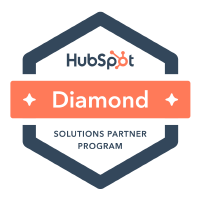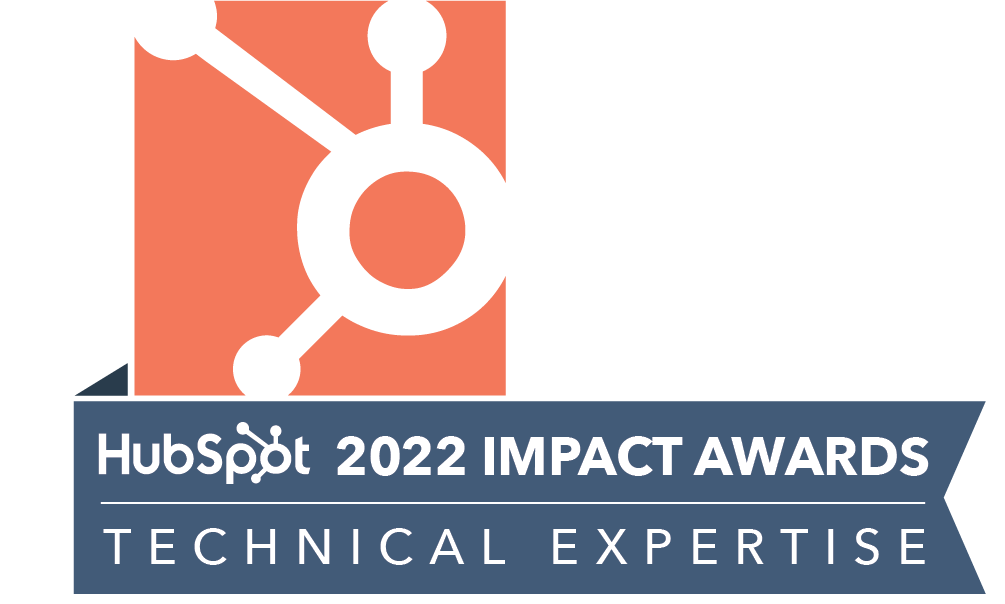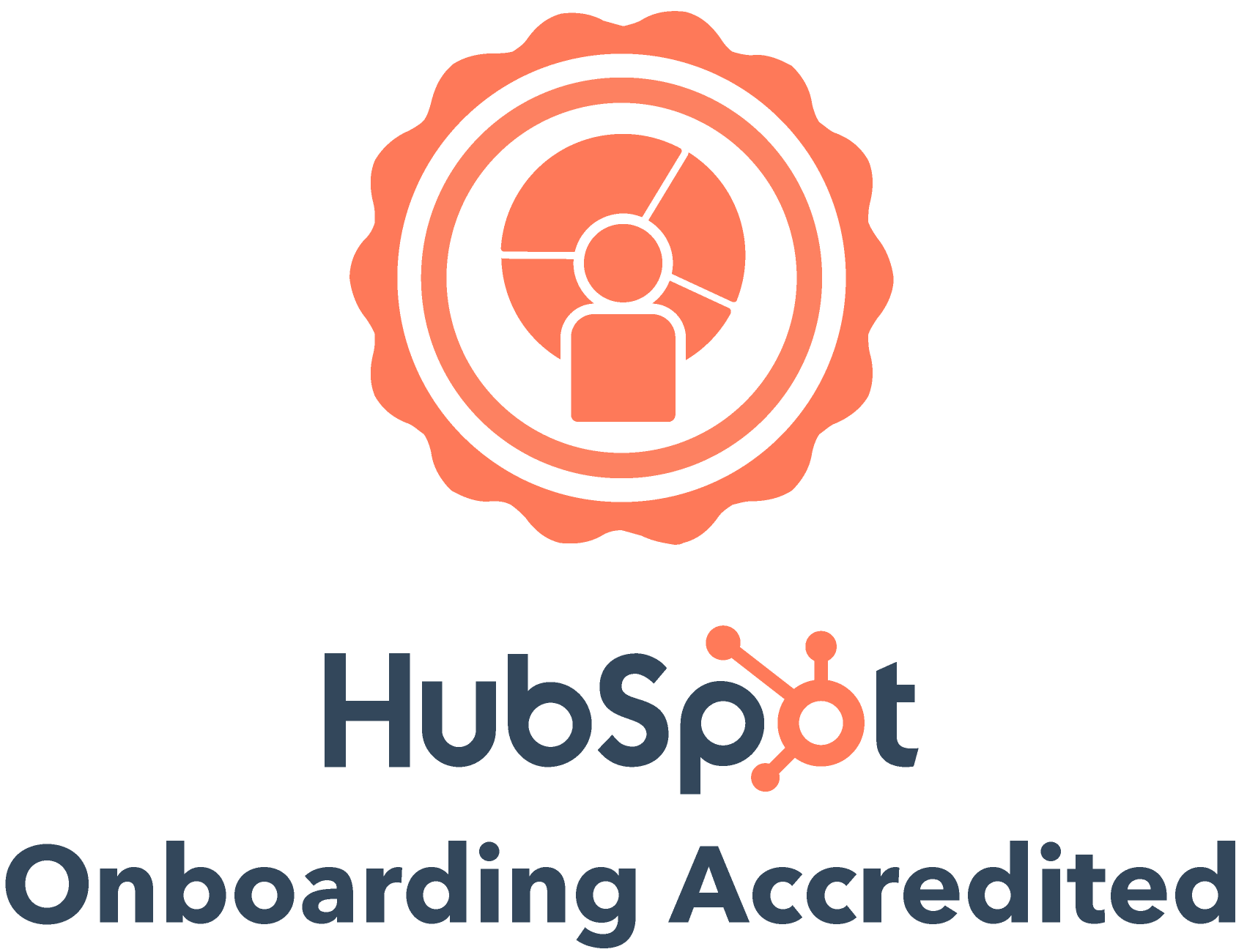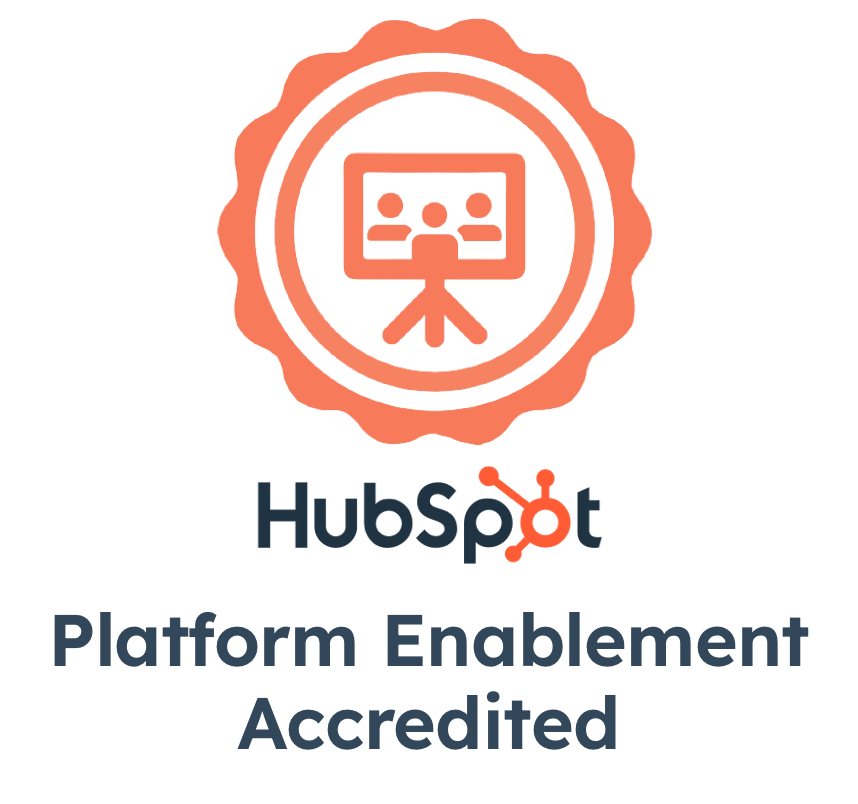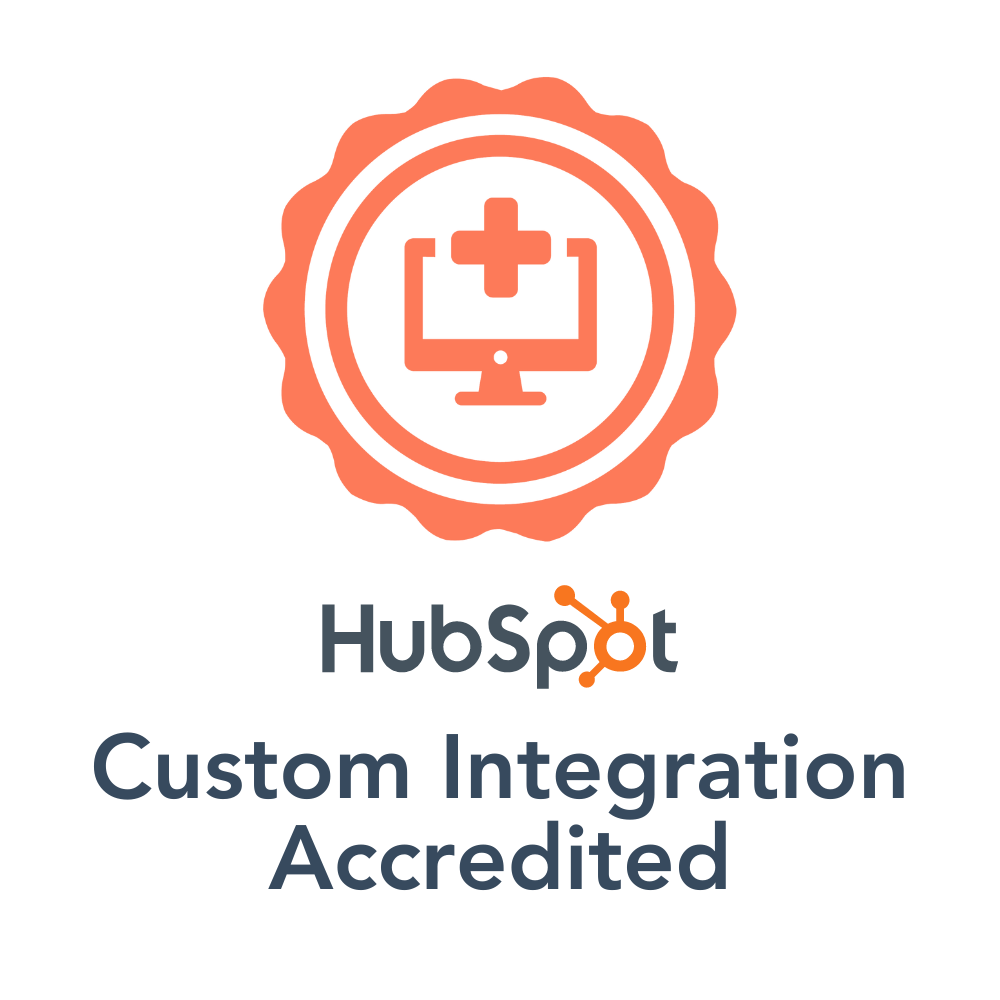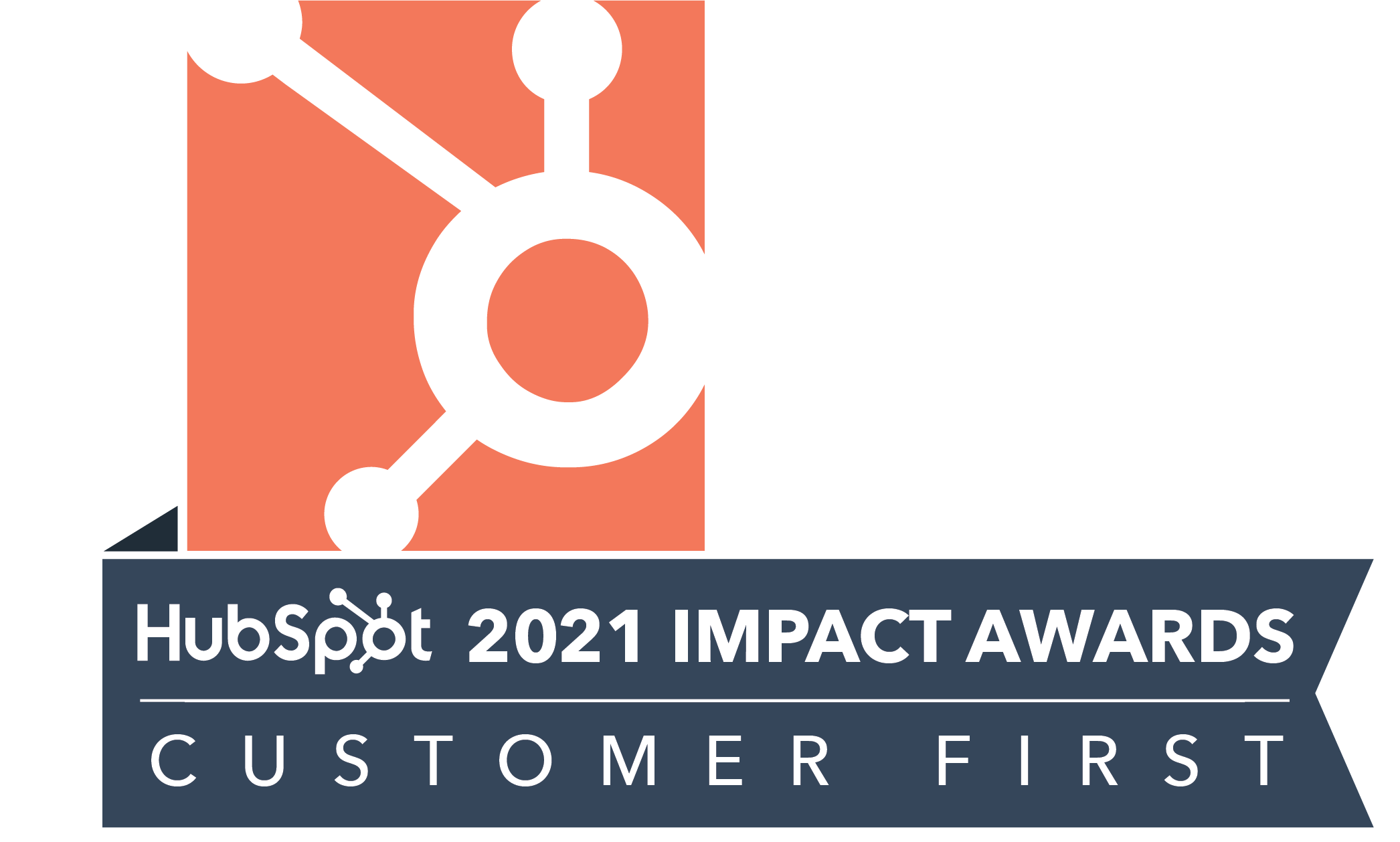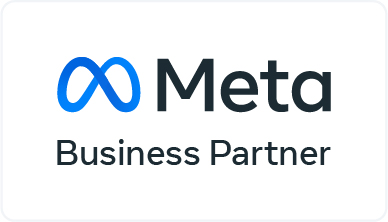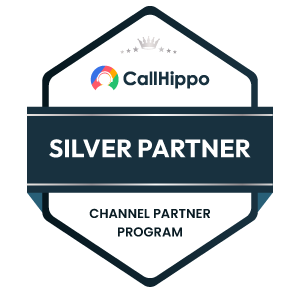Here's what happens when you leverage martech just right. Seema shares her experience of leading one of those rare brands that successfully created an entirely new consumer category in India, and now leads that category by a wide margin - all with the right mix of martech and data.
Find out all that and more right here👇👇
Listen on Spotify >>
Panelists:
-
- Seema Arora, Head of Marketing and Brand, Resmed
- Adarsh Noronha, HubSpot Country Head, India & SAARRC
- Abhinav Sahai, Co-founder, Niswey
Timestamps
Skip to the section that appeals to you the most
00:00 - Podcast and panelist intro
06:59 - How should CMOs approach getting the right Martech tools
10:43 - Customer journey touchpoint that work wonders in a niche category
116:20 - Tune in to the customer experience with Martech data
18:18 - Measuring performance with martech data - the right approach
23:27 - Great marketers need to be good data analysts
24:17 - Unlock new revenue streams with martech data
28:49 - Seema’s strategies to grow brand awareness
33:49 - How Martech adds speed and scale to campaigns
37:54 - Best practices for truly engaging brand communications
39:46 - Seema’s secrets to growing an all new D2C product market in India
44:47 - Personalized, martech-enabled conversations are the future
Discussion Summary
Seema: First of all, thank you very much Abhinav and Adarsh for having me in this conversation. I think, and thanks for the very nice introduction, Abhinav. You know, ResMed, of course, is my first assignment in healthcare being in, you know, in marketing for, on consumer durables or consumer goods. Of course, it was the first experience, but very interesting. And I think a lot of learning for me as well. ResMed, as I mentioned, is into, you know, respiratory and sleep apnea solutions.
We make medical devices, and these medical devices are generally used for out-of-hospital care, so people can use these devices at home. And the biggest challenge that we are facing in this industry is that a lot of people in India as well are suffering from sleep apnea. They have snoring as a symptom, daytime sleepiness as a symptom, fatigue as a symptom, but they don't know that the symptoms are for a disease called sleep apnea. Snoring in India is actually termed as that if you snore, which means you are actually sleeping good.
It's a good quality sleep that you are getting, which is not the fact. So one, of course, is the ignorance of the disease conditions. Secondly, again, you are breaking a myth that something that you are thinking is good, actually not good, which actually led us to the idea of there has to be a continuous amount of communication. We have to have it with the patients to tell them about the disease conditions. First of all, is that, you know, having this condition awareness among audiences is very, very critical where we use a lot of market tools, you know, to have those information given to our customers or the patients or so.
So I think in the entire journey, we have this entire digital setup, which is called D2C, direct-to-consumer setup, that we worked out in the last three or four years. And we've been interacting with the customers or the patients on a regular basis through these smart tech platforms. And most of our products, if I say, these products are not the box movers, you know, it's not that there's a prescription coming from a doctor and a patient will go and buy it. No, it's a journey. So they start with awareness, they get into the home sleep test, whether they want to get diagnosed themselves or not, then they get into trial, whether these kinds of products are really, you know, I can adapt or not as a patient or as a customer.
And finally, the post-purchase, which is again, you have to maintain your therapy. So it's a journey. It's a customer journey. And that's where, you know, we've been utilizing these Marktel tools very, very extensively.
Abhinav: I think what you shared, just to share that story with, because the awareness part that you're sharing, right, snoring and all of those things....honestly, before we started working with ResMed, I also did not know about any of this. I was like, Oh, snoring is a problem. I didn't know. Right. And when we, you know, had our first interactions, I realized, Oh, okay, when I Google sleep apnea and everything, I'm like, Oh, okay. It sounds like a big problem that people do not know about.
And Addy, just to bring that community point back, actually, community is how ResMed and HubSpot got together. I remember I think ResMed's tech is led from the Singapore region by Rajiv and his team, right Seema?
Is that still the case?
Seema: It's still there, but yes, of course, a lot of changes internally in terms of, you know, the reporting, et cetera. And I think there's a lot of enlargement in terms of, we have a mark tech department as a, you know, within the organization, which play a very, very important role, because we use so many market tools across the countries within the APEC region, which is why they have a separate department. And secondly, most critical is that we deal with patient data.
So privacy, and security, data security is very, very bad. It's paramount for us. Therefore, for any marketing tool that we use, the department has to first approve and there are several tools that are in use. So, yes, he's there and he has a good number of people working under him. It's a separate department.
Abhinav: I was just sharing because the journey started in 2018. So it's been a while since ResMed started using HubSpot. Rajiv came to us and we had a quick conversation, but he said, then nobody has to speak to my India team. And then incidentally, we were doing a hug event. And unlike the last event where Dan came in, at that time we used to do physical events. So Seema and Vikas from the team, from the ResMed team, they came over to the event, to the physical event and we met and we saw what we were doing with HubSpot.
And I think that's where when they saw the community and the tool and everything, the conversation flew from there on.
So community played a big role for ResMed to come to HubSpot.
Adarsh: Very encouraging to hear that. And I think it is a powerful arsenal in terms of getting the right minds to come together and share information. So a community and its benefits are always underplayed. So I'm keen to hear from Seema further as we go into this discussion, more on that also.
But my mind is drawn back to what Seema said a while ago, that she has a whole lot of tools, the marketing tools, that are at display and potentially for you to use. You have now the experience of having worked with a good market tool, a plethora of tools at your disposal.
What's an ideal situation to work? What's the journey a marketing manager or a head of marketing should take to ensure that the market tools are aligned in such a way that it increases brand communication and brand thought leadership? What would be your advice?
Seema: Yeah, I think the most important thing is in any communication is understanding the audience, you know, what is your audience and what you want to communicate, that's more important. Second most, I think part of it is that in terms of usability of the tool etc, how that tool will allow us or help us to communicate what we want to communicate to our audiences. Also need to understand a bit more, of course, in our cases, the data privacy or security, whether the tool can provide all those features and protocols available, which provide the data security, because you will be having a lot of customer data or patient data at your disposal.
So that's more important. More than that, and also I think a lot more in terms of, you know, having a, you know, within the organization, how best can you, you know, talk about these tools, you know, when you come to, when you speak to your, you know, top management, because there is an investment in, you know, every tool. And it's not that easy to figure out the ROI, honestly, you know, in a tool. It's longer, you know, in a, maybe in the longer run, you can still you know, have those conversations.
But in a short run, you cannot say that if I use this tool, then definitely, you know, I'll get the business double, triple. But these are interesting. And we have seen by using these tools, the overall organization in terms of revenue, in terms of processes, in terms of customer delight, it really, you know, good, a good rating. So it's just not the revenue, which is important. I think the way you handle, the way you speak to your customer, the way you do engagement, the way you do the data analytics, even a feedback is as simple as doing surveys.
You do a lot of surveys to understand what my customer is looking for. I think in that sense, aspect one has to really get into before you, you know, finalize or mark that tools. And one more thing I just keep on adding is that too many marketing tools sometime in the organizations, you know, integration becomes a challenge. Everybody's looking at the data, but everybody's looking from a different lens. So how easy these marketing tools can integrate with each other, it's also very, very important.
So I think one has to keep all these things in mind if you are getting into marketing, which I feel at least in our healthcare, a lot of companies are getting that. I mean, you know, within different marketing platforms, when I speak to the companies, you know, the related colleagues, et cetera, everybody is getting into marketing tools. It's becoming now need of the hour, maybe the new era of marketing, honestly.
Adarsh: And I think the direct benefit out of using it the right way would be to create some kind of a trust factor between the brand that you are and the service or the product that you offer to the intended persona that you're aiming at. And if you don't do that well, then obviously you will not reap the rewards of a potential stack or a tech tool that can offer. So what are the best practices that you yourself did when you came into this organization and what was running on top of your mind when you started a vision like this?
Seema: Okay, so when we started this, you know, the direct to consumer communication using this market tools, of course, HubSpot is the one we've been using extensively. All our landing pages, the website, everything is on HubSpot. And if I talk a bit about the kind of products and services we are into and how it moves, it is a journey, as I mentioned about. So a typical journey of awareness, creating interest, decision making, and then having a purchase action, and then post-purchase.
So a typical journey actually works for any sleep device or a CPAP device that we sell. So like in the awareness stage, for example, we have created a questionnaire, the Sleep Quiz questionnaire, which is hosted on HubSpot. So people who are searching symptoms like snoring, daytime sleepiness, they don't know it's a sleep apnea. So even if you tell them that this is sleep apnea, they're not going to listen to you so easily. So we get them into those landing pages where we have a bit of interaction happening through Sleep Quiz.
Now we are getting into app format, which is My Night app, which we are soon launching in India. Which is basically screening. You know, you screen yourself, you are not sleeping well, or you have these challenges, let's, you know, better screen yourself, see what's the problem. So that's a lot of tools that we use at the screening stage, because that's the first stage where we provide those disease awareness or condition awareness. Then comes to the interest is typically that if they come, we have those lead magnets, we get their name, email ID, phone numbers, etc.
And then we do our email marketing, WhatsApp marketing with them, where we send a lot more communication. Because even if understanding that this is the disease, they don't do much about it. Because this is the chronic disease. This is not a, it's a lifestyle disorder. This is not something they have a problem and if they don't treat, they're going to die. It's not that dangerous. But yes, in the long run, they can have so many implications. So there's a lot more communication that's required before they get into a so-called interest, from an interest to a decision-making stage.
Even on the screening stage, they don't know how the sleep test is done. You know, what does they have to use, how many times they have to wear, how many nights they have to use the device, et cetera. So a lot of video, you know, information, the small, small clippings that we keep on sending through emails, through WhatsApp to these guys to make them comfortable that this is nothing, this is not rocket science. This is something you can easily do at home and just wear it at night.
And then, of course, there's a lot of support in terms of in case something goes wrong, you know, the device is not working, they can call us, etc. So the whole mechanism is available to support them remotely in case if they want to do this, these kind of a test at home. After doing the test also, they don't know whether the CPAP will be the one where they can adapt themselves or not. So then we do again do a lot of video, a lot of testimonials also we need to share with them. Testimonials from patients, testimonials even from doctors, because sometimes they don't listen to anyone, they just listen to doctors.
If a doctor is saying probably it's the right way. So those testimonials bring a lot of credibility because such a niche category and you know brand is also very niche and a lot of people are not aware about the brand as well. So they need you know this brand has this kind of a presence across the country or across the globe and definitely the product and services are good. Even after that, when we sell products, which we have used a lot of our online platforms also, like Shopify, et cetera, where they do the transactions, payment gateways like Recipe, et cetera.
They can do these transactions, and after that, we get them into loyalty programs also, rewards, because as I mentioned, it's not a box moving. After they start using the device, they want reports. So everything, all are cloud connected, they need their reports, they need a hand holding through, you know, changing the filters, changing the mask, etc. So the engagement is there on each and every touchpoint, right from awareness till the post purchase, etc. And these marketed tools actually helped us at HubSpot, we use Salesforce, we do Shopify, we use the payment gateways like Razorpays, etc.
So a lot more of these (martech) tools really help us to build that engagement at various stages of this customer journey. And for us, very important thing is that we get good visibility. So we know where they're dropping, how many are dropping, how many are moving from one stage to another stage. And then we do surveys, we use Qualtrics as a survey tool, and get more feedback saying why they have dropped out, what is what they are looking for, so that we help them to get into the journey again also.
So retargeting, remarketing is also something that we do. As we say, it's a long journey, honestly. Sometimes people wait even for two years, honestly, before they really do something about it. So keeping a customer data for two years, keep on engaging them, is something it's very critical for us. And all these platforms help us to do. It's not like you show an ad on a television or out of home media, et cetera, and people will really go and buy it. It's just not going to happen. So a lot more conversations before they finally decide to get into authority.
Abhinav: Wow! So you know people, you know of customers who would have converted after two years, you're saying?
Seema: Absolutely. Because we started in 2018. Now we are getting 15 to 20% of our leads that we are getting, which already exist in the system, but they came back to us. So they must have searched it various ways, et cetera. And they come across Resmed on the internet, on content, on video content, and they realize that, yeah....and within two years the situation also got worse and so that's also one of the reasons they say that okay maybe you know they have to now get into a solution etc. Today close to percent 20 of our leads that we are generating are resubmitted and they are resubmitting after six months, one year, or two years or so.
So which is which is good...it means that whatever we manage to tell them is something it's working. And surely they are coming back and now ask. And those leads, the conversions are more than 30%.
So those leads are converted better compared to the ones who are coming for the first time.
Adarsh: That's a great lesson for marketers and businesses who want quick results and who actually don't relate to the realities of the persona's life that they're going through. In your case, it's much more predictable and easy. But in some the cases, especially if you're selling a product, people would buy some of the product and they might not return. Here in this case, at least, they have an issue and the therapy is very limited.
So you're on top of their minds.
But I think you made a brilliant point there on having the patience to do the right things and to do it diligently day in and day out. Because if you're doing the right things to the right personas and the message is communicated, trust might take different timelines to build for various folks. But you need to be consistent throughout. And you shouldn't lose hope. And that's a brilliant message. But the other piece that really intrigued me is you measuring it. I love the fact that you said 30% converts.
"It's a higher probability of conversion." "It took two years to convert." And you had other measurements built in. So my mind is trying to ask you, while we have the tools, while we have the thought leadership ideas, the content that we create, and the dissemination of the content in various channels, how critical is this measuring part? And what are the things you have done, Seema?
Seema: See, I think when you start something, you have to have your own conviction and wisdom. Everything can't be tracked from day one. It's not necessary also, because otherwise you will not do anything new if you keep on tracking few things, etc. But at some stage of the journey, you want to have an ROI build-up or so. I feel it's not only a revenue that one has to treat that as a measuring metric or so, I think. Because this is, as I was talking about D2C, we have a separate channel, which is B4B, where we are selling to distributors and where distributors are doing the conversations.
But end of the day, consumer is same. So he can move to B2B, he can come to B2C, the person who is even visiting a doctor can come to your website, right? And consuming information. And we have seen by using these tools, The overall, you know, the as a sleep business, we have grown significantly. It is as high as 25% in last couple of years consistently, which is which was in less than a double-digit, honestly, earlier. So the way I'm saying this is that one, of course, is the revenue, which is not related just to our D2C, because people want to interact even at the distributor, look and feel of the products, et cetera, and they can purchase from there as well.
Overall business, there is a significant improvement. That's one part of it.
Second, I think deliverable or a metric should be how many people are consuming your content, how many people are visiting your website, because you are creating your patients or I can say the customer for the future. You're building a pipeline, you know. We could not get into this ROI conversation in the first year or maybe a bit of second year also. But after that, when we created this channel as a revenue channel, we started creating all these conversations and building up these matrices.
So revenue is definitely a metric. Somewhere it will come. But I think the engagement that you are working out, the website traffic that you are getting, the followers, social media followers that you're getting, the conversations. Today, I think because of this, we managed to create a conversation about sleep in the various forums. I don't have to tell any community saying, which is where we do these CME programs, that you have to have a sleep apnea as a separate program, or I say a subset of that program.
It's already there. They consider, they know that this is something. So I think from our overall awareness for creating that aura, this also should be created, it should be considered as a delivery matrix, or you can say the measuring matrix. Then of course screening. So screening doesn't mean everything will get into, everybody gets into a diagnostic or a tool. If you can screen so many people, the interaction when a customer does with a digital tool, I think it's somewhere stays in his mind rather than just looking at the ad in an ATL or so because you interacted.
You know our sleep quiz questionnaire today has 42 questions and today of 80% the people do that. So which means there is an interaction that we try to build up. And they like that interaction. They like those quiz questions, et cetera. They're interested in filling up. Otherwise, nobody will fill up questions. So how much screening you can do, how much interaction you build up with the customers, because you are creating them, or you are helping them to get into therapy, definitely a revenue stream for us in near future.
So yeah, initially, there is a challenge in directly connecting results to revenue initially. But over some time, I think it will surely, surely build revenue for the organization.
Adarsh: That's awesome.
Abhinav: Yeah.
And I can confirm to that, you know, when we started working, you know, when we started building initially, like Seema said, we just started with landing pages and, you know, small things that, okay, let's put a small quiz and things, see what happens, right? Mostly it was about spreading awareness, right? Six years ago, nobody knew. And then, I still remember having one conversation and Seema was like, we need to have several questions. And I'm like, no Seema, nobody's going to fill so many questions on our website form, right?
And now she's, as you heard, 42 questions, and 80% of people filling that 42-question form. That's amazing, right? And then all of this was backed up with, again, I've had the chance to work with some members of Seema's team. Amazing you know some of the guys were really good with data, are they data analytics person or they are a marketer right.... Sunil and all you know.... team yeah yeah absolutely
Seema: They've been brilliant....absolutely..... because martech platforms give you a huge opportunity to look at the data so I think in marketing everybody has to be an analyst now. There's so much data flowing in through these platforms, everybody has to understand whether it comes to a customer segmentation behavior, understanding the pain points, etc. So, I think somewhere or the other, as Abhinav rightly pointed out, they all are analysts.
Maybe not to intrude in their qualification, but they must know how to read the data, how to look at the data. It's a goldmine, honestly. One of the things which came up very, very strongly in most of our feedback and the survey mechanism is, for example, this sleep quiz. We find that there's an overlap of 30% with insomnia. So we are talking about sleep apnea, but there's again a major disease condition that ResMed is not into, and now we are venturing into, as a worldwide organization.
There were a few acquisitions also. Understanding from these data points that our customer whom we are talking to, there is an overlap of insomnia and sleep apnea. So we can always treat them with sleep apnea because we have product solutions. But what about insomnia, which is again a quite prevalent disease across the globe? So this data gave us the oppotunity to work for our future funnel, honestly, not just the customer funnel, but even for our product funnel. So that's really important.
Adarsh: What a beautiful insight we've just got. I think this is probably the highlight of this episode. It's going to be where suddenly marketing teams will not just have super creative marketers and the content writers and the designers and editors and the ones who control the orthodox way of doing marketing, but also data scientists. And every business is now data-centric. Every business needs that extra intelligence to be forging ahead compared to the competitors. But the example that you shared is even mind-blowing.
It's helping you to open up another division, another sister concern, another business altogether. The ability to serve customers at a broader end-to-end scale only because of MarTech's analysts that you had is a phenomenal example. I'm so stoked to hear this, and credit to you and your team for doing that.
Congratulations. It's amazing.
Seema: When we are talking about it, there's another thing. We always say that sleep apnea is a man's disease, right?
Snoring is only men, right?
But when you look at the data of our sleep quiz, 28% respondents were female. So we realized that people, the female audience, interact more strongly with tour martech platforms than the male audience. I mean, from our data, it could be different for other organizations or industries. And then we started getting some more information from the, from on the ground, from our sales team, realizing there is a 20% within a patient population who are coming to the doctor, yes, there are to 15-20% patients are women and they never get diagnosed.
So we realized that the sleep apnea, which we consider as a men's problem is, you know, it's there with the female also. We recently launched a separate product for females which we call the "Care for Her" the campaign we are doing for female audience. We already had this product available for the last five years but we've always thought that you know snoring and you know fatigue daytime sleepiness is mainly with with the men. But with female, the symptoms are a bit different, but they have sleep apnea.
We were thinking that not even 5% of the women will have this, you know, the forms filled up. We realized that there is a significant amount of women are also suffering from sleep apnea, and allows us to launch this product in India, where we call it a, you know, Autoset for Her. Autoset is a name we generally give to one of our products. We say Autoset for Her. So typically, targeting to female population is something which is again, I feel that because we started interacting with the patients directly, we started getting feedback from them.
I think it's a good thing. Nobody else, no marketer will get any information from anywhere except the patients or the person who is suffering.
Adarsh: Post this episode, I have a feeling there will be a lot of demand for data analysts and data scientists by the marketing departments of a lot of companies.
Abhinav: Totally agree.
Adarsh: I just wanted to shift gears a little bit. While you use smart tech tools and obviously the data analytics that we spoke together around the patients that we need to have the good fit identification, Well, all of that does help us to increase and improve our brand awareness strategies.
I'm also keen to hear from you, how did you do and what are the things you did and you're planning to do to improve the overall awareness of this brand? And for example, Abhinav a while ago said, "I went and Googled something". Google is the brand.
But what he was referring to was he went to search for something. Like the Xerox examples that we use, right? What plans do you have to make your company synonymous with somebody who has a sleep problem, they should just take your name? That would be an ideal brand awareness situation for me. So what are you trying to do around this?
Seema: Yeah, absolutely. And brand awareness is always a very costly affair, honestly. And the kind of system and the product solutions we are into, it's a consistent process. Even if I spend money on television, it's not going to give me the impact, day two kind of thing. But we do spend a good amount of money on awareness initiatives in digital era.
So when it comes to awareness, there are two stakeholders that we keep in mind. One, of course, is my patients who are suffering from these challenges. And second is our care givers who are our doctors. Because even the information about sleep apnea, CPAP solutions, and disease awareness as a whole is very low, even among physicians also. So if I create more awareness in patients, they will go and check with the physicians, right? And if the physicians don't have that information, my awareness, you know, the whole exercise will be futile.
So when it comes to patient awareness, we have separate objectives out here, where we do promotions in terms of, you know, creating those disease awareness in terms of Facebook, in terms of, you know, Google, we do paid advertising as well, displayed ads, etc.
We do a lot on influencer marketing. Because we know that that will actually give us a good awareness because the influencer is also known, you know, in the entire conversation. We recently did earlier with, even with Baba Sehgal also, but that of course contract is over now. One of the campaigns where we got close to 10 million views in two months. So it's a very interesting campaign that we did. It helps us to build the overall brand awareness, category-awareness, which is sleep apnea.
So we are actually, you know, creating awareness for both per se. So, mostly into digital space that we do. On-ground space, we do, you know, the patient awareness camps, etc. Doing a lot of conversation with our doctors, CMEs, conferences, conclaves, which are a lot of associations, the medical associations are part of it. So the idea is to build that kind of, you know, awareness spectrum. We also do a lot of PR. We talk about sleep apnea, but people don't think about even sleep also.
So probably we have to go a bit, you know, I say back to the first point, which is when you say, you know, everybody asks how are you? We never ask, have you slept well? Right. And so important part of it. So we do a lot of PR activations where we talk, we, you know, in terms of having those conversation built up on various platforms about sleep, saying that sleep is an integral part of your overall life. So don't ignore it. Right. So if you're not sleeping well, if you have these challenges and then get them into a conversation about sleep apnea.
Because today the audience is not talking about sleep. And you tell them you have a problem with sleep apnea, he's not going to listen. So PR also plays a very important role. Through PR, we do a lot of testimonials, a lot of the conversations from doctors. Also, we build up a radio activation, where we just keep on doing a lot more awareness about the brand and the condition as such. I think for us, a major challenge is the condition awareness because we don't have much of a competition as such in the market.
And, you know, if we people are sensitized about the condition, about the disease, there's a high chance that they will definitely, you know, consider ResMed as a brand to, you know, or to buy the products, etc. So these are typical things that we do, not much in television per se, but definitely have radio and some part of on-the-ground activation, apart from digital, where we do most of our spins.
Abhinav: And Seema quick question on that. So it's like, when you think of, you know, these campaigns, I mean, is a technology or a platform or, you know. Does that part become a part of the conversation? Say "okay, we will, you know, how can this tool get a scale?" because you're looking at the scale, you know, at any campaign, right? So are the technology conversations also part of the, you know, planning?
Seema: Absolutely. I say when we devise any campaign, we generally do two campaigns in the year, which is like a major campaign. One of the campaigns is during the World Sleep Day, which is now touching the 15th of March is the World Sleep Day. So it's a one-and-a-half, two months campaign that we do. And whenever we devise the campaign, the martech person is a part of the conversation. Because for us, it's very important what martech tool we are using to communicate this. Sometimes you have to adjust your creatives accordingly so that you can use them or you can exploit your tool more effectively, and efficiently to provide this information to the larger audience etc.
For example, if I'm using the WhatsApp then the entire tone, the entire conversation, the entire look and feel would be different as compared to if I'm doing an email where I can put a lot more matter into the template etc. So yes, martech is integral part of the campaign design so that they provide us those, at least, you know, those nitty gritty or those points where we, if we, even if we have to do a bit of adaptation in the creative, we should do that because a tool, you know, a creative is as good as your tool is.
So if your creative is not fitting into your tool, the customer experience goes for a toss. So it's, it's very much there.
Abhinav: Okay. Very interesting. I mean, I don't think this kind of conversation we used to have a few years ago, right? How important the tool or the technical guy have to be there in the conversation, right?
Seema: For me also, like from traditional marketing, when I started my career, you know, where we used to spend almost everything on television or radio and maybe cinema and then outdoor etc. Now where we have most of the spends are on digital. So for us it's a complete shift I'll say in between like you know maybe 8/10 years ago I was spending 5% on digital marketing, today I have on digital marketing. So Everything has changed. In fact, it's a learning for all of us.
Of course, we are learning while we are doing it. But I think new breeds that we are getting into our marketing, they are pretty aware of them. And it's good because if you want to use these tools efficiently, effectively, you need the skill set and training. Very important.
Sometimes we put the tool into the ecosystem. We don't know half of the time, we don't know how to use it properly.
You may be using a or 10 percent 20 of it, which is also very important, providing relevant training to the marketing team per se. It's absolutely very, very important.
Adarsh: You mentioned about the shift in the industry around general digital transformation in almost all projects and Going digital for your brand awareness and your promotion is a natural byproduct of the overall market that we see globally. What I want to ask you is, in that journey where you've seen businesses leaning onto digital world for a bigger time, a bigger scale of operations and probably diversification of their businesses beyond the smaller abilities that come with attached with offline.
When this growth was happening, what were your best practices and inspiration? Like whom did you see? Which brands did you see? Or which practices did you see that really inspired you to become what you have done today?
Seema: So, you know, I mean, the earlier part of my career, I was with consumer goods. So I have a lot more learning from there. Samsung is something I used to follow a lot, the way they designed their whole ecosystem. They were completely on ground, you know, they were there, television and then on ground. Samsung shops, et cetera, there, and they move to digital. The way they project their product, the product pages are really good, providing a lot more information, and a lot of animation that they build up in that entire setup is something really good.
Then I think Asian Paints is something which I was following a lot. Here you have a bit of an idea on CRM, because they do a lot of communication to architects, they do a lot of communication to contractors, and it's all digitally done. So just imagine a contractor is also getting a lot more information digitally. I mean, we're all still talking to patients who are educated and, you know, who know our technology now, nowadays or so, but that time even AsianPaints one managed to do such kind of interaction build up with contractors.
I think that's very important. And I think in the current world, yes, there are certain partners whom also we deal with. When I say partners, a strategic partner, Apollo is something which we really, you know, look at it in terms of the way they have created the entire digital area. Just the hospitals, now they have a lot more other ventures into which is mainly into patient education and, you know, having their online digital presence or so. So yeah, there are a few brands which always inspired me.
I look at their look and feel in terms of how they're presenting themselves and also how they're interacting with the customer. That's very important.
Adarsh: Wonderful.
Abhinav: I think one of the key answer I think the audience would be looking to hear from you is you know what is your advice to your peers or people coming up you know in your positions and you've been you know I think okay let's go back one second Seema. If I'm not wrong you know ResMed India was the first team right which did the, took the D2C route, right? And then you guys, and then you became so successful that you were telling the entire world, right? The ResMed world team. Can you tell us a little bit more about it first of all?
Seema: Yeah, because most of the business countries where ResMed operates in, they are either the reimbursement market or they are the distributed market. So we sell it to distributors, distributors sell it to the patients, et cetera. And there's little conversation that goes between a resident and patients per se. But there's a good amount of awareness about the brand as well as the condition, you know, the sleep apnea. But in India, we realize that even if we give education to doctors, it's not going to help us because patients are not coming forward to have a conversation.
Then who will they prescribe, you know, the test or trials or maybe a product also. So the idea is that we have to speak to the patients. And it's a very hard exercise in terms of because you're creating a market, you are not gaining a market share, you're creating a market by talking to consumers, it's unmet needs. It's not even ....forget about the brand recall, people don't consider this as a problem. So this means there's consistent communication we have to do with the customers to sensitize them about the challenge etc and that's how we created this direct-to-consumer which helped us in terms of first building our presence.
In the entire digital world. I mean, ResMed has a name, the sleep apnea is a disease being talked about by various people in two different forms. A lot of other people came forward and say, yeah, this is something we are suffering from I think that's a good point. I think very interesting for us where people now start talking about it, which was missing completely when it comes to India. And that's how now, you know, we want to take this conversation to the other part of the world as well, where we want to speak to the patient, make them understand, make them in charge of their health.
This is something which worked for us and that's what we are shaping up now with other countries as well, where we started all this conversation. Putting our website, having those conversations and, you know, sensitizing people about the disease awareness and getting them at least to the next level where they talk about it, even to their peers, even to their partners, or even to the doctors as well. I mean, but they should talk about that's what we were looking for. And we managed to do that well in India.
Abhinav: Wow, that was a bold move. I mean, and you said, okay, we'll do it in India. And then India is showcasing to the rest of the world. Hey, see, this is possible, right? That was the world move. And you guys won a lot of awards also, right?
Seema: In the process last few years. Yeah, we got a few awards for our digital campaigns. One of the campaign was wake up to go to sleep. That's also, we got some awards and then the campaign which we did with Baba Sehgal, which is the best digital campaign of the year award. That's also we got it. So I think these awards also allow us to showcase the brand as well as the business we are into. So sometimes it's good to have those awards. And it really worked for us in terms of having those conversations and people knowing about it.
Otherwise, when I joined ResMed, a lot of times people don't know. Today, if I say, OK, I am from ResMed. We are in sleep apnea. I think people know that this is sleep apnea. And when you get to hear from your relatives, friends, et cetera, it really gives you that sense of achievement. Yeah, we managed to really create something or some, I say, awareness into their mind. So that's good.
Adarsh: Yeah, I've had the misfortune of being called Hotspot instead of HubSpot four years ago. And it's not even a new startup. It used to be a publicly trading, very well-known company across the globe. It is what it is. It takes time. It takes its own due course. But when it is done right, when it is done in an organic way and a very sustainable way, it is here to stay. And once it is here, then the switch is real. Then there is a point in time when it comes that all the efforts, like you rightly said, the long gestational period waiting for something to happen will happen like this.
And then it's the community that takes forward. The word of mouth takes forward. The referral businesses kicks in. And you suddenly see what you've been consistently doing really helps you. Bring a lot of data, isn't it?
Seema: Absolutely.
Abhinav: Wonderful. I think we are running out of time. So Siva, one last question, right? So what's your advice for your peers and you know, people now who will be stepping in your places, you know, in the next few years?
What's your advice to them?
Seema: Yeah, I think I must say that martech is the evolving technology and a lot more things will come up. It's an ever-changing field, honestly. Whatever we learned, it's just the tip of the iceberg. There's a lot more which is going to happen in this field. Artificial intelligence, your virtual realities, a lot more, I think. In terms of even data scientists, data analysts, a lot more will happen. And I think all of these tools are so good in terms of giving you so much of informed decision-making power.
It's like in marketing, we always say 50% marketing is waste, but I don't know which 50%. But here I think I have much more control over what we are doing and what we are spending it. It's really important, it's really critical and this is the future of marketing honestly. The traditional marketing will further go down because so much of clutter in OTTs and your television channels etc and people want conversation. They just don't see once and then just get away. They're very expensive, those channels are very, those ETLs are expensive.
It's required for some brands definitely If it's something which people are using the kind of industry we are in need into which is basically even the need is not recognized. Forget about the unmet need, this need is not recognized. We have to have a conversation. I think these tools are future for us, for marketers into these industries. This is something that we have to And as I mentioned, ever-changing, evolving. Today, whatever we are doing, probably have to do a little different years coming up, et cetera.
So we should be preparing ourselves up to date on these various tools.
Abhinav: Wonderful, wonderful. This has been great, Seema.
Addy, any last thoughts before we close?
Adarsh: No, I think I have taken a lot of, gold mine nuggets from this conversation but one thing that really led me to think is the change that we are seeing in the martech world. We saw the influx of tools, we saw the technologists coming in, we're talking about AI to be all of that. But this conversation gave me another dimension of what the future is going to be and the power of using the data in the right way. And that data to be used not just to solve for the customers and solve for your prospects, but solve for the business growth as well.
And I was so happy for Seema's team, which did the contribution eventually to come up with new product lines, come up with a new product itself and the company itself, another brand new service. It was amazing to hear that. So that's my biggest takeaway, Seema. Thanks for sharing all of that. Thanks for taking time. It was a wonderful conversation.






